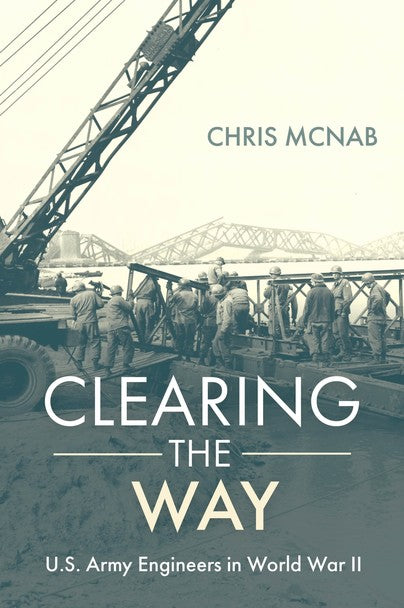Clearing the Way : U.S. Army Engineers in World War II
Usually shipped within 24 hours
UK deliveries from £5.95
Delivery & Returns
Delivery & Returns
We use the Royal Mail, DHL Express or UPS for our customers. For UK addresses, deliveries under 10kg are a standard £4.95 via Royal Mail Tracked 48 Service. For orders over 10kg and overseas customers, postage is calculated for you at checkout once you have entered your postal address. This price, does not include any potential custom charges that may apply, depending on the product or destination, as every country has very different import duties / taxes. Online exclusive products (such as trainers) will be delivered to you directly from the printer, separate from other items in your order, but your postage fee covers ALL items in your order.
If you are unhappy with your purchase, please email shop@tankmuseum.org within fourteen (14) working days of receiving your goods, and return it to us at the address below, in its original condition, unopened (with any seals and shrink-wrap intact) and we will issue you a full refund or replace it. Goods must be returned at your own cost. If the item is faulty, you do not need to return it, we will send you a replacement free of charge.
Description
Description
By Chris Mcnab
Hardback
Quite simply, without engineers the U.S. Army would have been unable to fight World War II. The men of the Corps of Engineers, with the strength of more than 700 battalions mobilised during World War II, were tasked with every imaginable engineering challenge.
In rear areas and back in the United States they built the facilities essential for everyday military life: showers, toilets, barrack blocks, military hospitals, training camps, storage depots, and much more. To keep logistics flowing to the front, they constructed or repaired thousands of miles of roads and bridges, plus built airfields to support Allied strategic and tactical air operations. Engineers also created endless chains of defensive positions, from simple trench systems to complex bunker networks, as well as retrieving damaged vehicles and equipment from still-contested battlefields.
Combat engineers, meanwhile, occupied some of the most dangerous frontline roles in the American armed forces. Heavily armed with demolitions and weapons, plus weighed down by engineering tools and even driving armoured bulldozers, they were tasked with destroying enemy strongpoints, bridges, equipment, vehicles and many other obstacles to the advance, in both overland and amphibious operations.
Building the Battlefield: Tactics and Techniques of U.S. Army Engineers in World War II brings together an exceptional collection of primary sources from engineering field manuals, technical manuals, and other official publications. They provide a detailed insight into the work and skills of the U.S. Army engineers, including building a field fortification, laying and defusing mines, making a contested river crossing, or camouflaging a defensive position properly. Through these texts, we gain practical insight into the exceptional individuals who often combined first-rate infantry fighting skills with engineering skill and problem-solving ingenuity.
![Clearing the Way : U.S. Army Engineers in World War II Book [variant_option4]](http://tankmuseumshop.org/cdn/shop/files/50312.jpg?v=1756285697&width=1214)

![Clearing the Way : U.S. Army Engineers in World War II Book [variant_option4]](http://tankmuseumshop.org/cdn/shop/files/50312.jpg?v=1756285697&width=88)
![Christmas Tank Museum Wrapping Paper - Two sheet pack Wrapping Paper [variant_option4]](http://tankmuseumshop.org/cdn/shop/files/DSC2318.jpg?v=1759225755&width=176)

![Clearing the Way : U.S. Army Engineers in World War II Book [variant_option4]](http://tankmuseumshop.org/cdn/shop/files/50312.jpg?v=1756285697&width=640)



